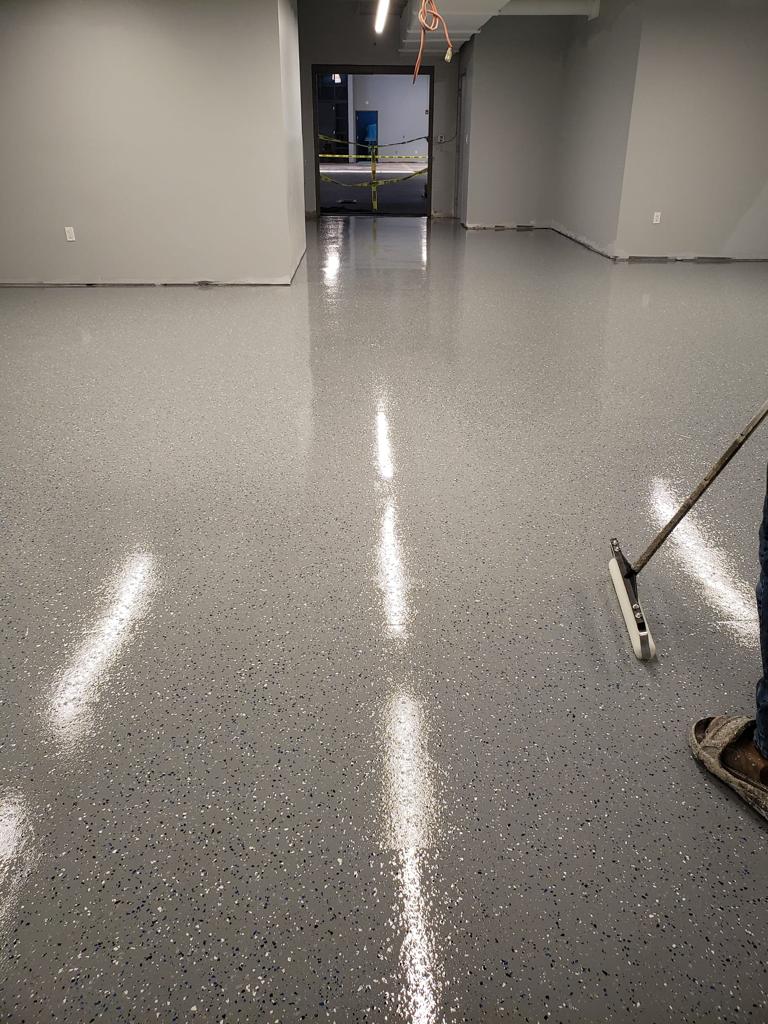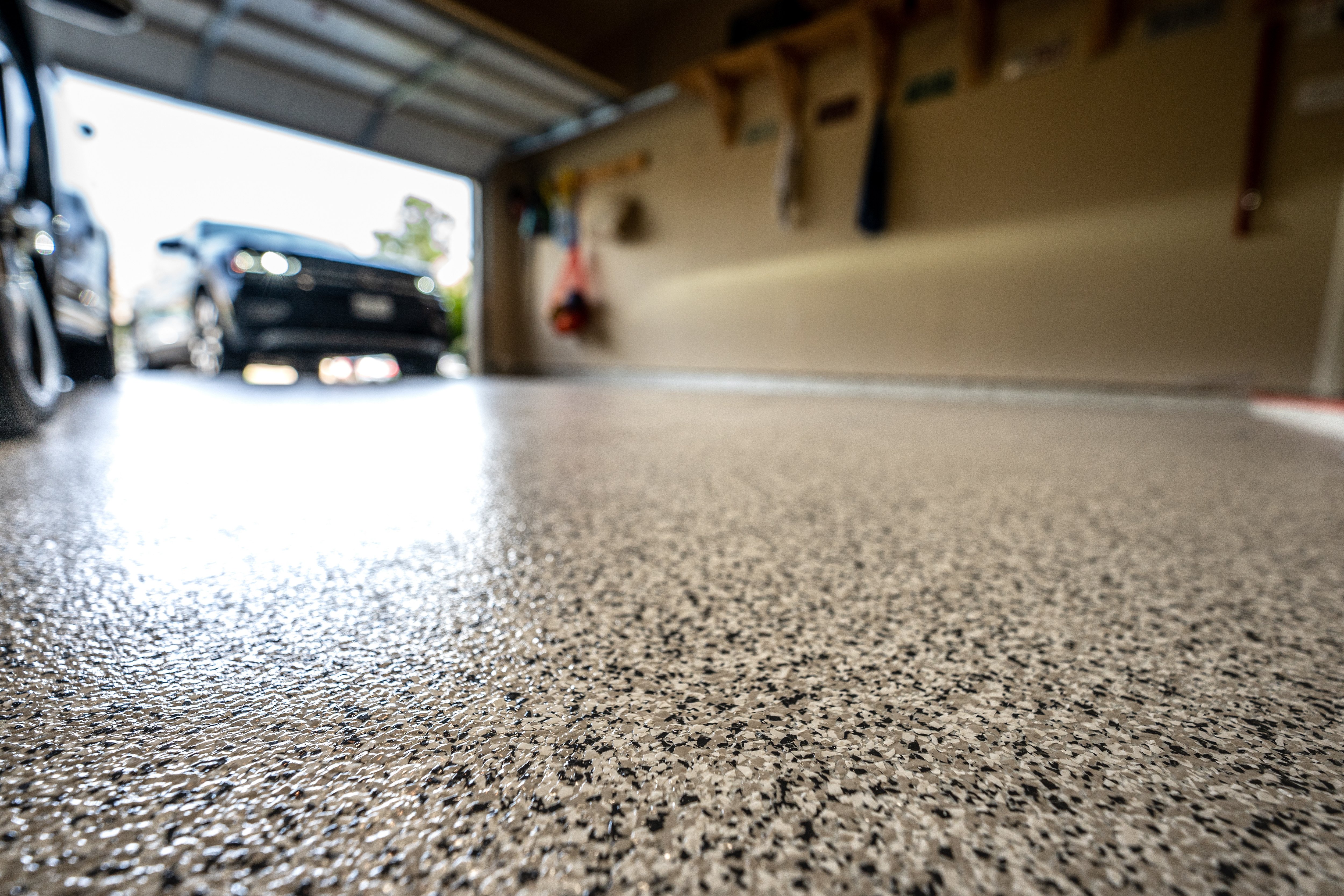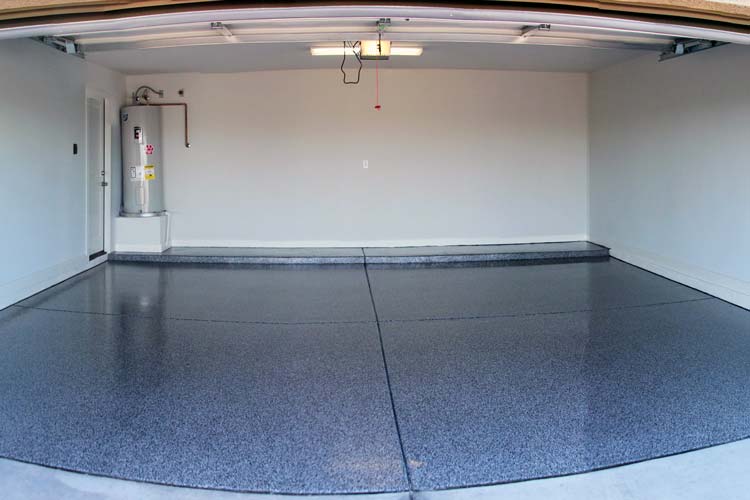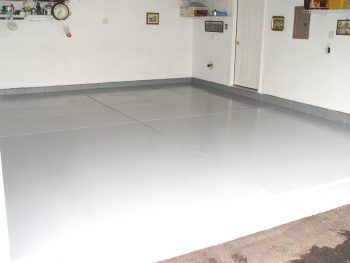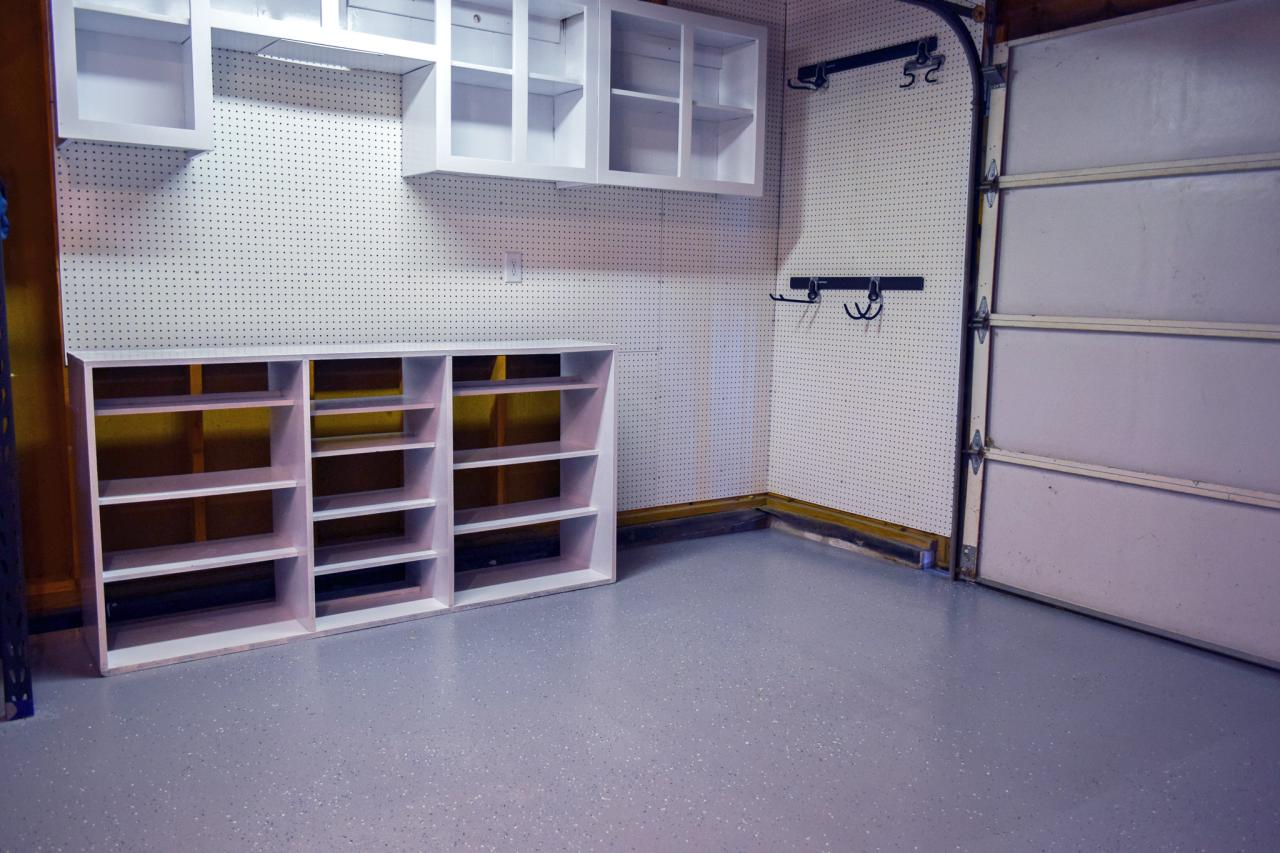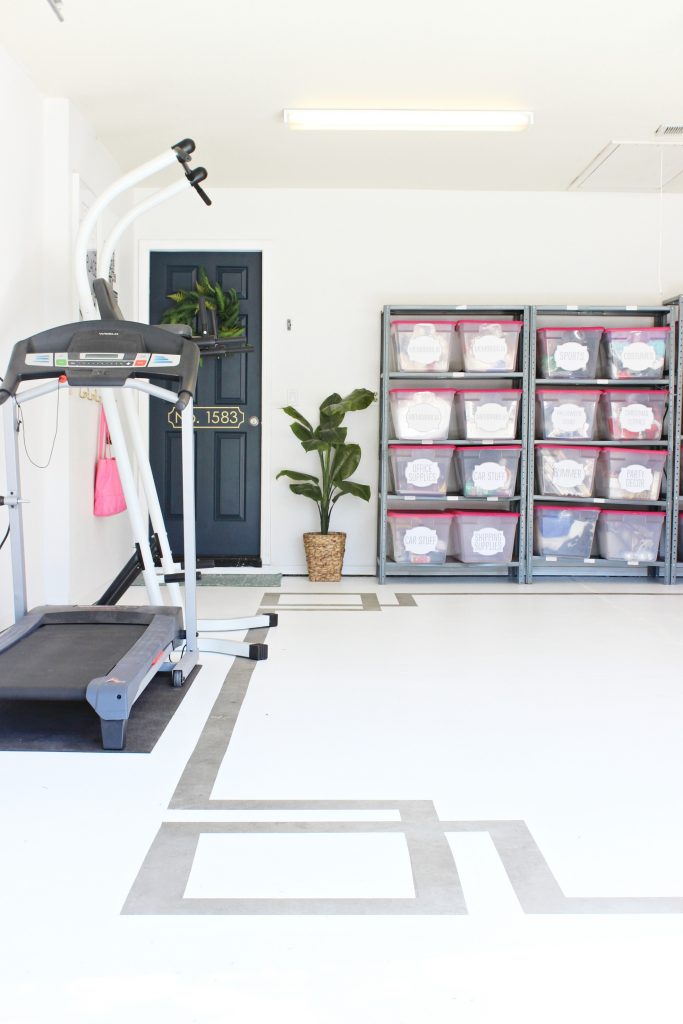Choosing the Right Paint: A Guide to Selecting the Best Garage Floor Paint
When it comes to painting your garage floor, choosing the right paint is crucial. The paint you select will not only enhance the appearance of your garage but also provide protection against stains, spills, and wear and tear. With so many options available, it can be overwhelming to make the right choice. We will guide you through the process of selecting the best garage floor paint.
- Determine Your Needs: Before selecting a garage floor paint, it’s essential to determine your specific needs. Consider factors such as the purpose of your garage, the type of traffic it receives, and the level of durability you require. For example, if you use your garage as a workshop or for heavy machinery, you’ll need high-performance epoxy paint that can withstand heavy use.
- Consider the Paint Type: There are different types of garage floor paint available, including epoxy, acrylic, and latex-based paints. Epoxy paint is known for its durability and resistance to chemicals and stains, making it an excellent choice for high-traffic areas. Acrylic and latex-based paints are more affordable and easier to apply but may not provide the same level of durability as epoxy.
- Evaluate the Surface Preparation: Some garage floor paints require extensive surface preparation, while others can be applied directly to the concrete. Evaluate the condition of your garage floor and consider whether you’re willing to invest the time and effort into proper surface preparation. If you have an older floor with cracks or stains, you may need to use paint that requires additional surface preparation, such as etching or patching.
- Research Brands and Reviews: Before finalizing your decision, do some research on different brands and read reviews from other homeowners who have used the paint you’re considering. Look for feedback on the paint’s durability, ease of application, and overall satisfaction. Pay attention to any specific issues or concerns that may have been mentioned in the reviews.
- Consult with Professionals: If you’re still unsure about which paint to choose, consider consulting with professionals in the industry. Reach out to local paint stores or flooring experts who can provide you with personalized recommendations based on your specific needs and budget. They can also offer valuable insights into the latest trends and innovations in garage floor paint.
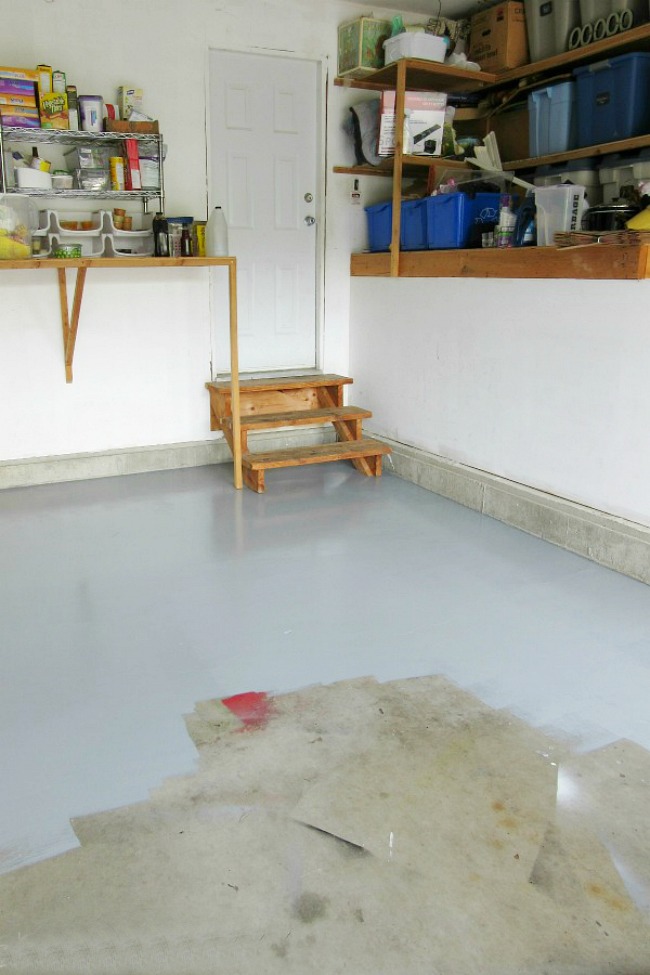
Preparing the Surface: Essential Steps for Proper Garage Floor Preparation
Proper surface preparation is key to achieving a successful garage floor painting project. Whether you’re applying epoxy, acrylic, or latex-based paint, taking the time to prepare your garage floor correctly will ensure better adhesion and a longer-lasting finish. Here are the essential steps for preparing your garage floor before painting.
Clear the Space: Before you begin preparing your garage floor, clear out any items, tools, or vehicles that may be obstructing your work area. This will allow you to have a clear and accessible space to work on, ensuring that every part of the floor receives the necessary attention.
Clean Thoroughly: The next step in preparing your garage floor is to clean it thoroughly. Sweep away any loose dirt, debris, or dust on the surface. Use a power washer or a high-pressure hose to remove any stubborn stains, oil spills, or grease. For tougher stains, consider using a degreaser or a concrete cleaner. Allow the floor to dry completely before proceeding to the next step.
Repair Cracks and Imperfections: Inspect your garage floor for any cracks, chips, or imperfections. Use a concrete patching compound to repair these areas. Follow the manufacturer’s instructions for mixing and applying the compound, ensuring that you fill the cracks completely and smooth out the surface. Allow the compound to cure fully before moving forward.
Etch the Surface: Etching the surface of your garage floor is necessary to create a rough texture that will enhance the adhesion of the paint. Use an etching solution, which is commonly available in hardware stores, and follow the instructions carefully. Apply the solution evenly on the floor and scrub it using a stiff-bristle brush or a floor scrubber. Rinse the floor thoroughly with clean water to remove any residue, and allow it to dry completely.
Test for Moisture: Before proceeding with the paint application, it’s crucial to test the moisture content of your garage floor. Moisture can compromise the adhesion of the paint and lead to peeling or bubbling. Perform a simple moisture test by taping a plastic sheet to the floor and leaving it for 24 hours. If condensation forms on the underside of the plastic or the floor appears damp, you may need to address the moisture issue before painting.
Techniques and Tips for a Smooth and Professional Finish
Once you’ve chosen the right paint and prepared your garage floor, it’s time to apply the paint. Proper application techniques and tips can make a significant difference in achieving a smooth and professional finish. Below are the best practices for applying garage floor paint.
Gather the Right Tools: Before you start painting, ensure that you have all the necessary tools and materials. These may include a paint roller with an extension pole, a paintbrush for cutting in edges, a mixing paddle, a paint tray, painter’s tape, and a drop cloth or plastic sheeting to protect surrounding areas. Check the paint manufacturer’s instructions for any specific tools recommended for their product.
Mix the Paint Thoroughly: Before you begin applying the paint, thoroughly mix it according to the manufacturer’s instructions. Use a mixing paddle attached to a power drill to ensure that the paint is well blended. This will help distribute any settled particles or pigments evenly, resulting in a consistent color and finish.
Cut in Edges: Start by cutting in the edges of the garage floor with a paintbrush. This includes painting along the walls, corners, and any areas that cannot be reached with a roller. Take your time and ensure that the edges are neat and precise, using painter’s tape to protect walls and other surfaces if necessary.
Use a Roller: Once the edges are done, use a paint roller with an extension pole to apply the paint to the rest of the garage floor. Begin in a corner and work your way out, applying the paint in even and overlapping strokes. Use long, sweeping motions to avoid creating visible roller marks. Work in small sections at a time and maintain a wet edge to prevent lap marks.
Apply Multiple Coats: Most garage floor paints require multiple coats for optimal coverage and durability. Follow the manufacturer’s instructions for the recommended number of coats and drying times between each coat. Apply each coat in the same manner, ensuring that the previous coat is completely dry before applying the next.
Allow for Proper Drying and Curing: After applying the final coat, allow the paint to dry and cure according to the manufacturer’s instructions. Avoid walking or placing any objects on the painted surface until it is fully cured. This will ensure that the paint sets properly and provides the desired durability.
Curing and Maintenance
After successfully painting your garage floor, it’s essential to focus on curing and maintenance to ensure the longevity and durability of the paint. Proper curing allows the paint to fully harden and bond with the concrete surface, while regular maintenance helps preserve the paint’s appearance and protective qualities. Let’s explore the importance of curing and provide maintenance tips for your garage floor paint.
Allow Sufficient Curing Time: Proper curing is crucial to the longevity of your garage floor paint. Follow the manufacturer’s instructions for the recommended curing time, which typically ranges from a few days to a couple of weeks. During this time, avoid parking vehicles or placing heavy objects on the painted surface. Also, refrain from washing or cleaning the floor until it has fully cured to prevent any damage or premature wear.
Avoid Harsh Chemicals: To maintain the appearance and protective qualities of your garage floor paint, avoid using harsh chemicals or abrasive cleaners. These can strip away the paint or cause damage to the surface. Instead, clean the floor with a mild detergent or a specially formulated garage floor cleaner that is compatible with your paint type.
Regular Cleaning: Regular cleaning is essential to prevent the buildup of dirt, dust, and stains on your garage floor. Sweep or use a dust mop to remove loose debris regularly. For more thorough cleaning, use a mop or a soft-bristle brush with a mild detergent and warm water. Gently scrub the surface and rinse thoroughly. Avoid using excessive water, as it can seep into the concrete and compromise the paint’s adhesion.
Address Stains Promptly: Promptly address any spills or stains on your garage floor to prevent them from penetrating the paint and causing permanent discoloration. Use a clean cloth or paper towel to blot up spills immediately. For stubborn stains, apply a mild detergent directly to the affected area and scrub gently with a soft-bristle brush. Rinse thoroughly and dry the floor completely.
Protect the Surface: To enhance the longevity of your garage floor paint, consider implementing additional protective measures. Use mats or rugs in high-traffic areas to prevent wear and tear. Place furniture pads or felt protectors under heavy objects to avoid scratching the paint. If you frequently work with chemicals or oils in your garage, use trays or containment systems to prevent spills from coming into direct contact with the painted surface.
Regular Inspections: Perform regular inspections of your garage floor paint to identify any signs of damage or wear. Look for areas where the paint may be chipped, cracked, or peeling. If you notice any issues, address them promptly to prevent further damage and maintain the integrity of the paint.
Touch-Ups and Repairs: Inevitably, over time, your garage floor paint may require touch-ups or repairs. If you notice any areas of damage, carefully clean and prepare the surface before applying a matching paint color to the affected areas. Follow the manufacturer’s instructions for touch-up paint or consult with a professional for guidance.
Reapply a Topcoat: To extend the life of your garage floor paint, consider reapplying a topcoat every few years. A topcoat can provide an additional layer of protection and refresh the appearance of the paint. Follow the manufacturer’s instructions for the recommended time frame for reapplication.
Troubleshooting Common Issues
Even with careful preparation and application, garage floor painting projects can encounter common issues and challenges. From uneven paint coverage to bubbling or peeling, it’s important to be aware of these potential problems and have solutions at hand. Let’s discuss some common issues that may arise during garage floor painting and provide helpful troubleshooting tips to overcome them.
Uneven Paint Coverage: One common issue that can occur during garage floor painting is uneven paint coverage. This can result in areas that appear lighter or darker than the rest of the floor. To address this problem, ensure that you apply the paint evenly and consistently throughout the entire surface. Use long, overlapping strokes with a roller and maintain a wet edge to prevent noticeable lines. If you notice any uneven areas after the paint has dried, you can touch up those spots with additional paint to achieve a more uniform appearance.
Bubbling or Peeling: Bubbling or peeling paint can be frustrating and can compromise the durability of your garage floor finish. These issues can be caused by moisture underneath the paint, improper surface preparation, or poor adhesion. To troubleshoot bubbling or peeling, first identify the underlying cause. If moisture is the issue, you may need to address any sources of water intrusion and ensure proper floor sealing. If the problem is related to surface preparation or adhesion, you may need to remove the affected paint, reprepare the surface, and apply a new coat of paint using proper techniques.
Stains and Discoloration: Stains and discoloration can occur on a garage floor, particularly in areas where chemicals, oils, or other substances are frequently used. To address stains and discoloration, start by thoroughly cleaning the affected area with a mild detergent or specialized garage floor cleaner. If the stain persists, you may need to use a stronger cleaner or a degreaser specifically designed for removing stubborn stains. For particularly stubborn stains, you can consider using a concrete etching solution to help lift the stain before applying a fresh coat of paint or a stain-blocking primer.
Cracking or Chipping: Cracking or chipping of garage floor paint can occur due to heavy use, temperature fluctuations, or inadequate surface preparation. To troubleshoot this issue, you’ll need to remove the damaged paint by sanding or using a paint stripper, depending on the severity of the damage. Once the surface is clean and smooth, follow the proper surface preparation steps, including patching any cracks or imperfections. Apply a fresh coat of paint, ensuring proper adhesion and coverage. Consider using a paint specifically designed for high-traffic areas or applying a clear topcoat for added protection against future cracking or chipping.
Lack of Durability: If you find that your garage floor paint is not holding up well to the demands of your garage, such as vehicle traffic or heavy use, it may be necessary to assess the overall durability of the paint. Ensure that you have chosen a high-quality paint specifically designed for garage floors and that you have followed the manufacturer’s instructions for application and curing. If the issue persists, you may need to consider alternative paint options, such as epoxy coatings or polyurethane finishes, which offer superior durability and resistance to wear and tear.
How to Epoxy Your Garage Floor in 9 Steps
Waterborne Epoxy Garage Floor Coating Training in Buckeye, AZ
Epoxy Flooring Ideas to Extend the Life of Your Floors
Discover the Benefits of Painting your Garage Floor All Garage
Painting Garage Floors: Ideas, Tips, DIY, Cement – DIY Projects
How to Resurface a Garage Floor HGTV
How to do painted concrete floors in your garage using concrete
Related Posts:
